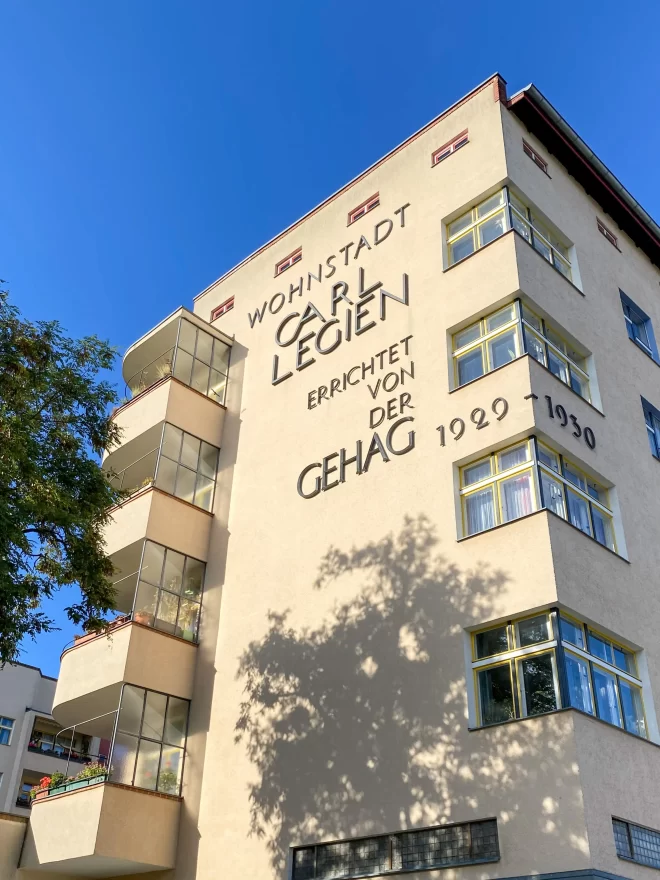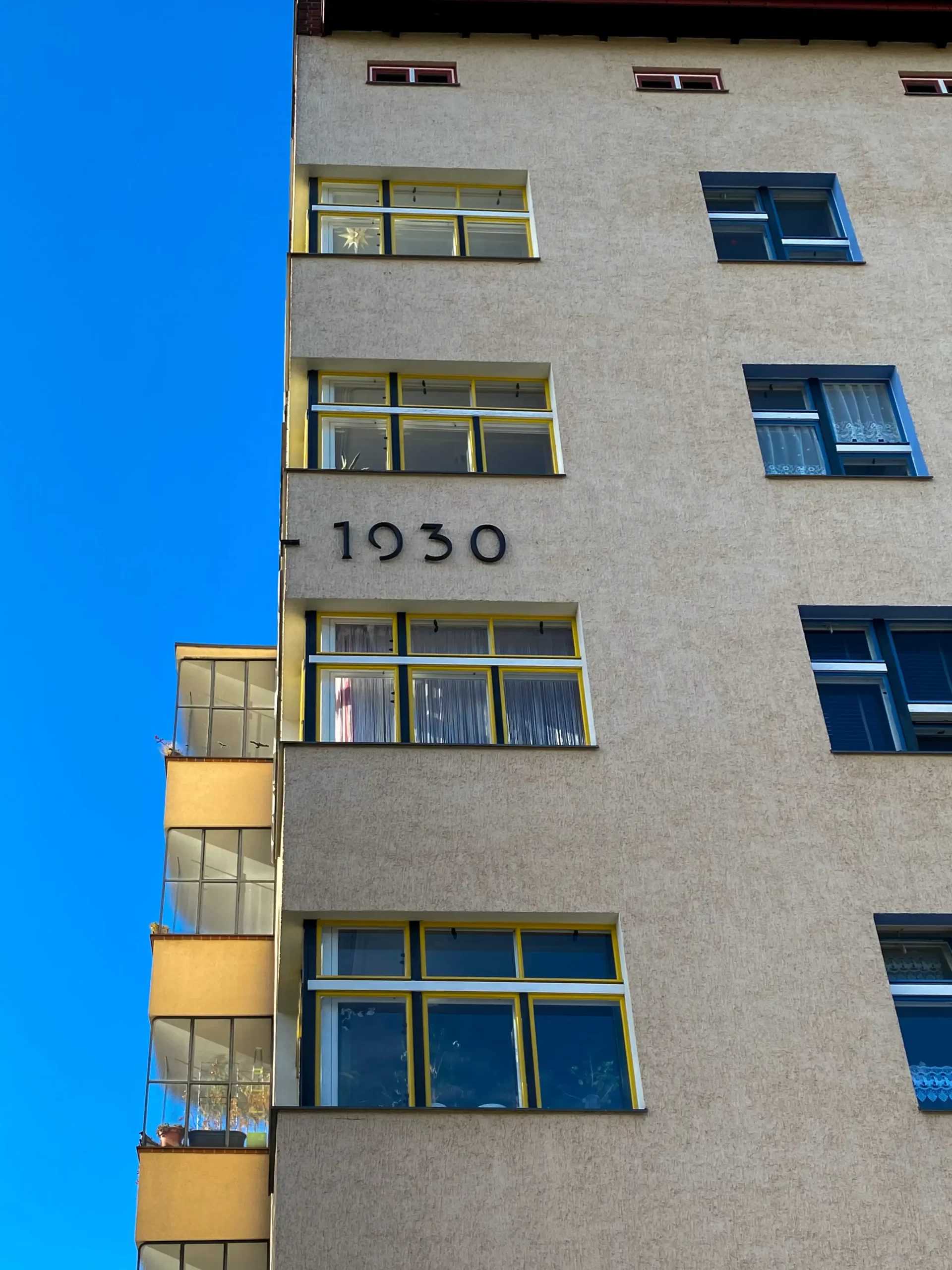
Wohnstadt Carl Legien, 1929-1930. Architects: Bruno Taut, Franz Hillinger. Photo: Daniela Christmann
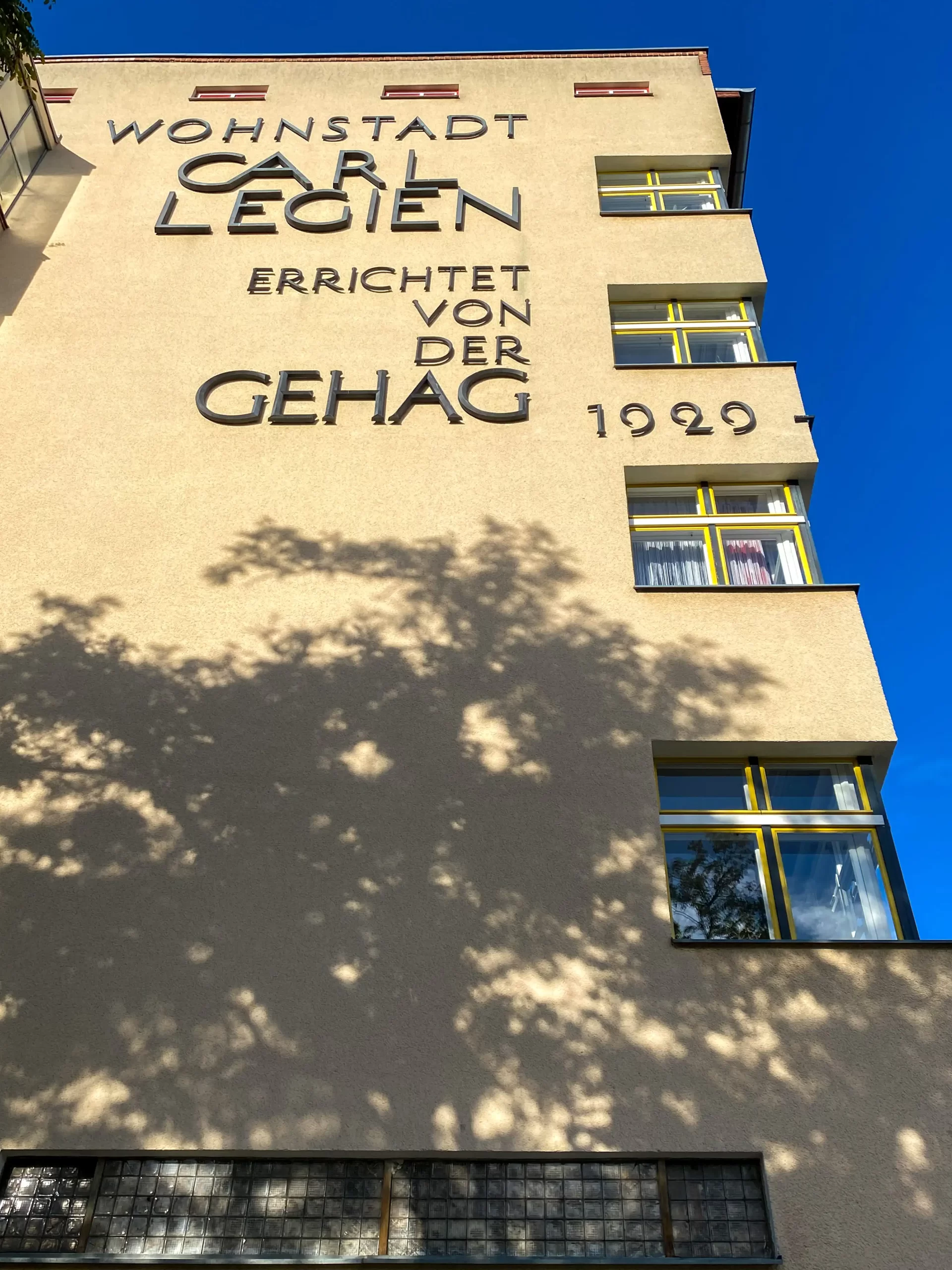
Wohnstadt Carl Legien, 1929-1930. Architects: Bruno Taut, Franz Hillinger. Photo: Daniela Christmann
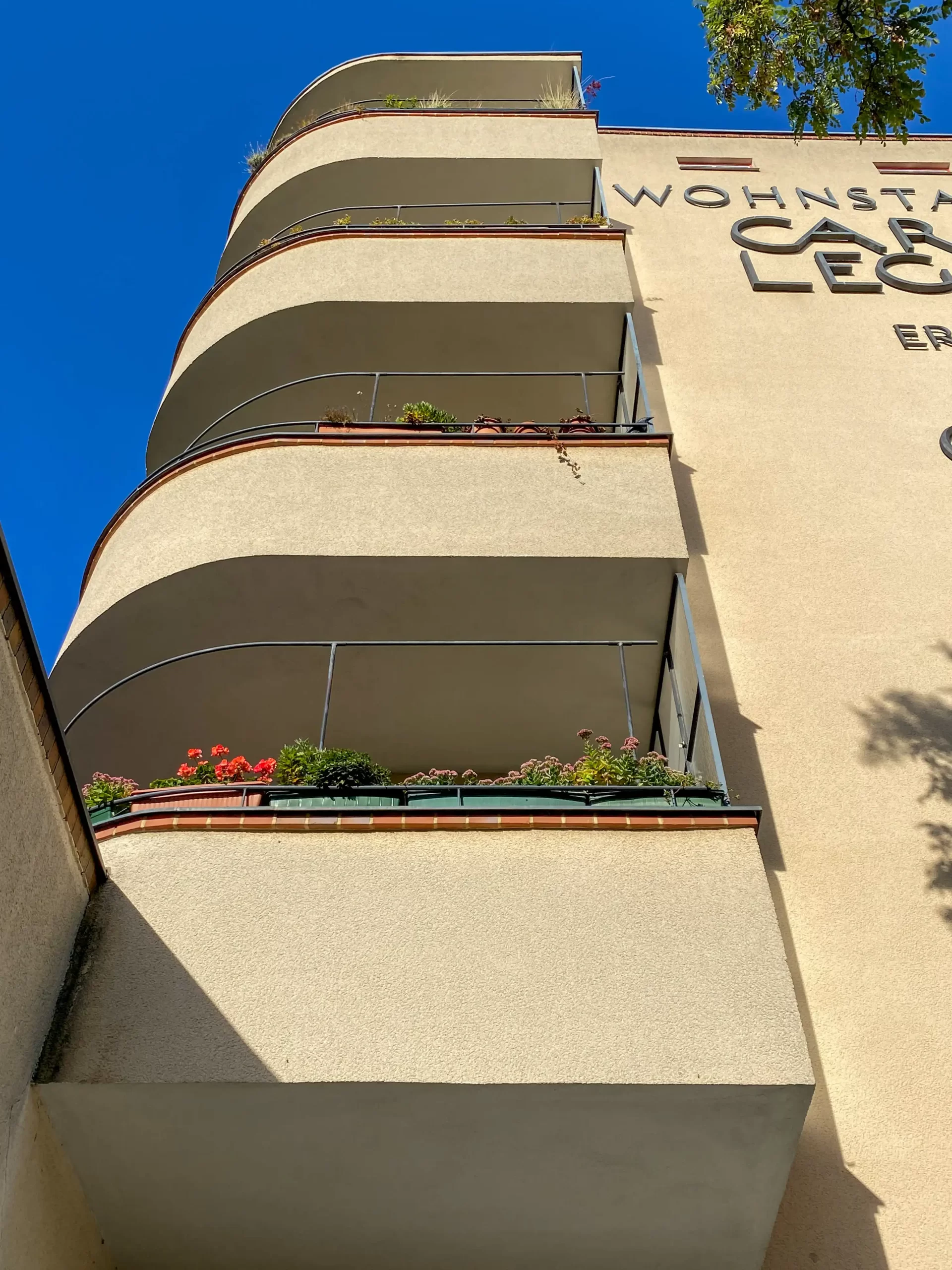
Wohnstadt Carl Legien, 1929-1930. Architects: Bruno Taut, Franz Hillinger. Photo: Daniela Christmann
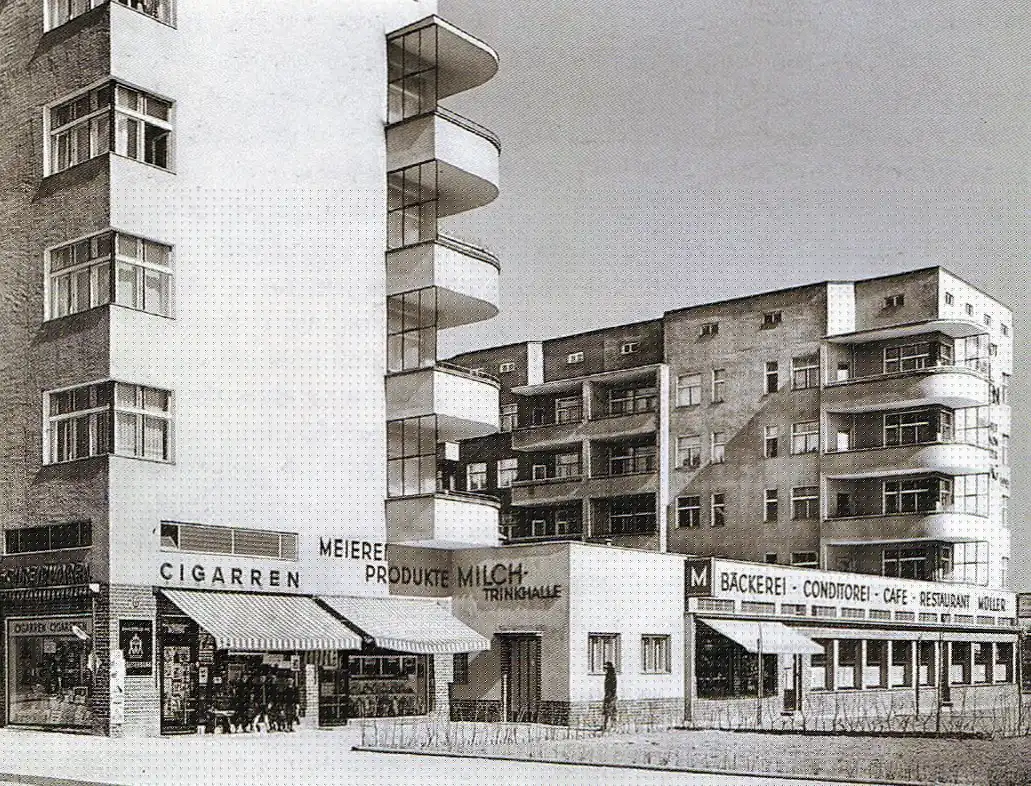
Wohnstadt Carl Legien, 1929-1930. Architects: Bruno Taut, Franz Hillinger. Contemporary Postcard
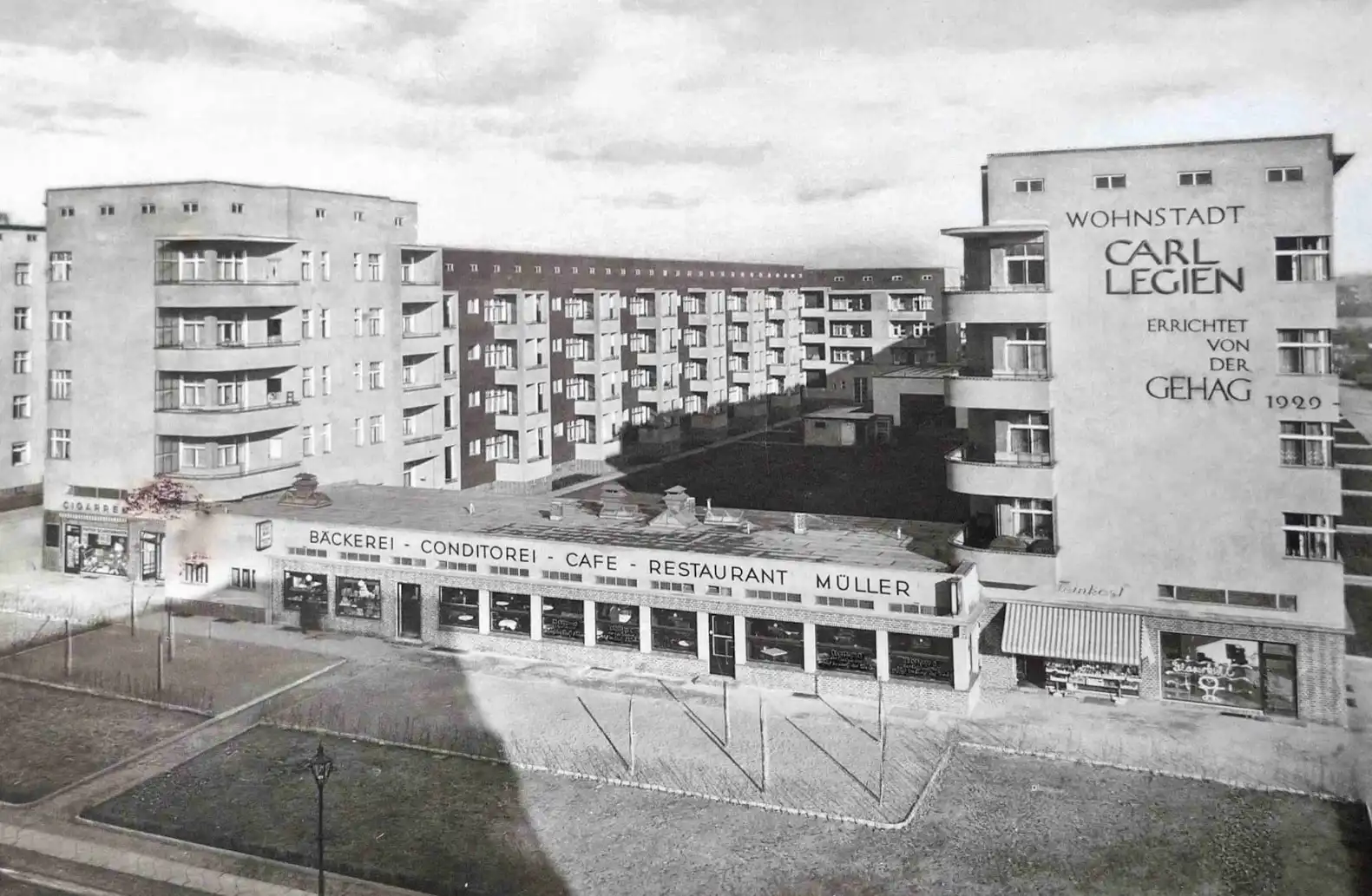
Wohnstadt Carl Legien, 1929-1930. Architects: Bruno Taut, Franz Hillinger. Contemporary Postcard
1929 – 1930
Architects: Bruno Taut, Franz Hillinger
Erich-Weinert-Straße 98, 100, 101, Georg-Blank-Straße1-5, 19-21, Gubitzstraße 32-49, Küselstraße 1-34, Lindenhoekweg 2-16, Sodtkestraße 1-46, Sültstraße 11-59, Trachtenbrodtstraße 2-34, Berlin-Prenzlauer Berg, Germany
Carl Legien
The 8.4 hectare Carl Legien housing development with 1,149 apartments in the Berlin districts of Pankow and Prenzlauer Berg is named after the first chairman of the German Federation of Trade Unions, founded in 1919.
Berlin Modernist Estates
Of the six Berlin Modernist estates, the Carl Legien estate is the closest to the city center and borders densely built Wilhelminian style neighborhoods. The high price of land in this location necessitated a corresponding urban densification.
Bruno Taut and the head of the GEHAG planning office, Franz Hillinger, therefore opted for concentrated multi-storey construction and designed a large four- to five-storey housing estate.
The client was GEHAG Gemeinnützige Heimstätten-Spar- und Bau-AG.
Carl Legien Housing Estate
Taut and Hillinger designed a housing estate consisting of six elongated, U-shaped apartment blocks grouped around green inner courtyards. Towards Erich-Weinert-Straße the blocks are closed by tower-like head buildings.
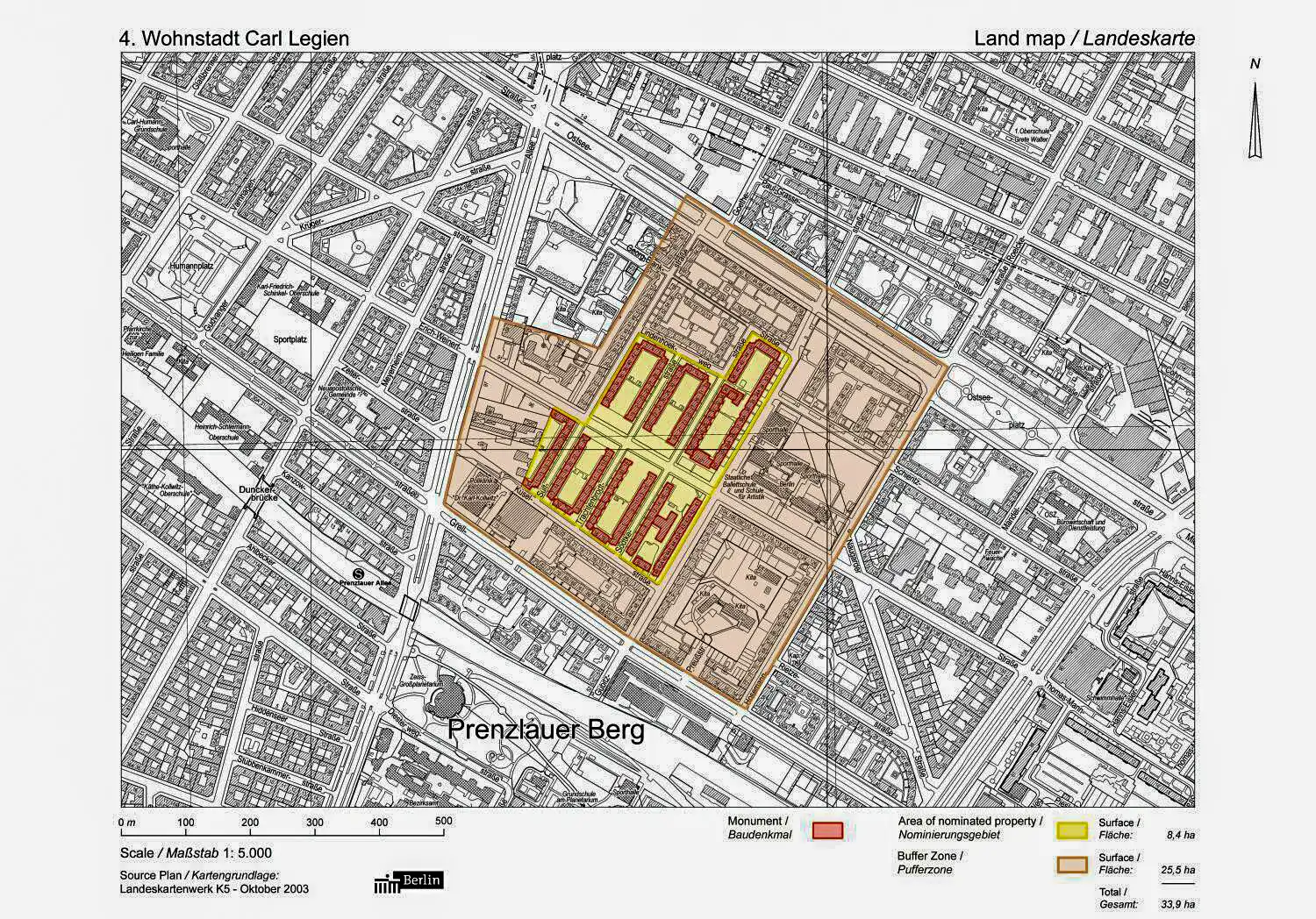
Wohnstadt Carl Legien, 1929-1930. Architects: Bruno Taut, Franz Hillinger. Site plan
The architects were primarily inspired by American, Scandinavian, and Dutch models: The arrangement of enclosed loggias in front of the actual buildings, for example, is reminiscent of the Tusschendijken estate built in Rotterdam between 1920 and 1921 by the Dutchman J.J.P. Oud, with whom Bruno Taut was in close personal contact.
Neues Bauen – New Building
The architecture of the Carl Legien housing estate followed the principles of Neues Bauen: structured floor plans that gave each apartment a kitchen, corner windows, a bathroom, and a semicircular balcony or loggia; clear basic forms and simple facades; strong colors as the defining element in which the facades and interiors were painted.
Each garden courtyard was given an individual color to which the details were assigned.
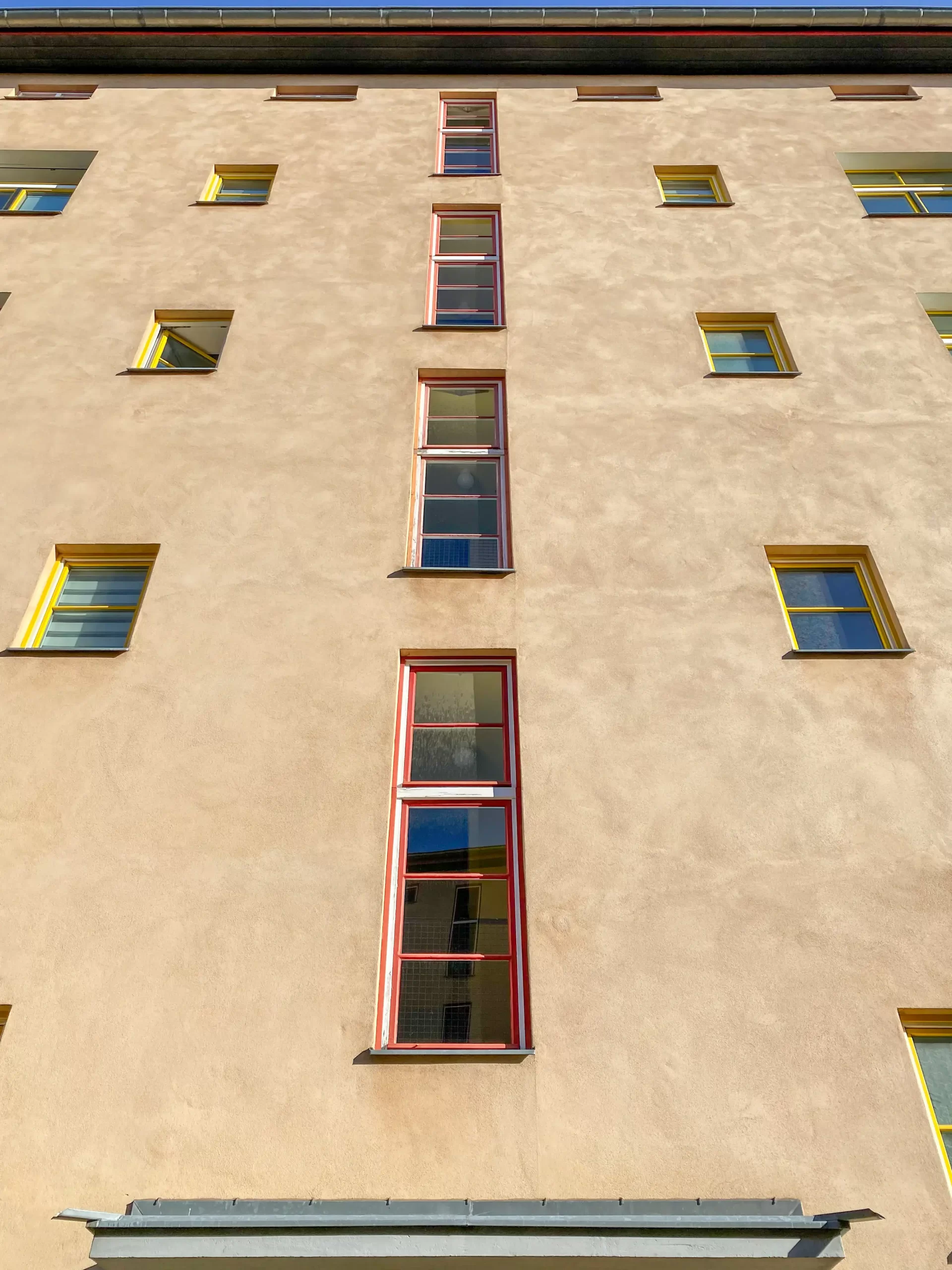
Wohnstadt Carl Legien, 1929-1930. Architects: Bruno Taut, Franz Hillinger. Photo: Daniela Christmann
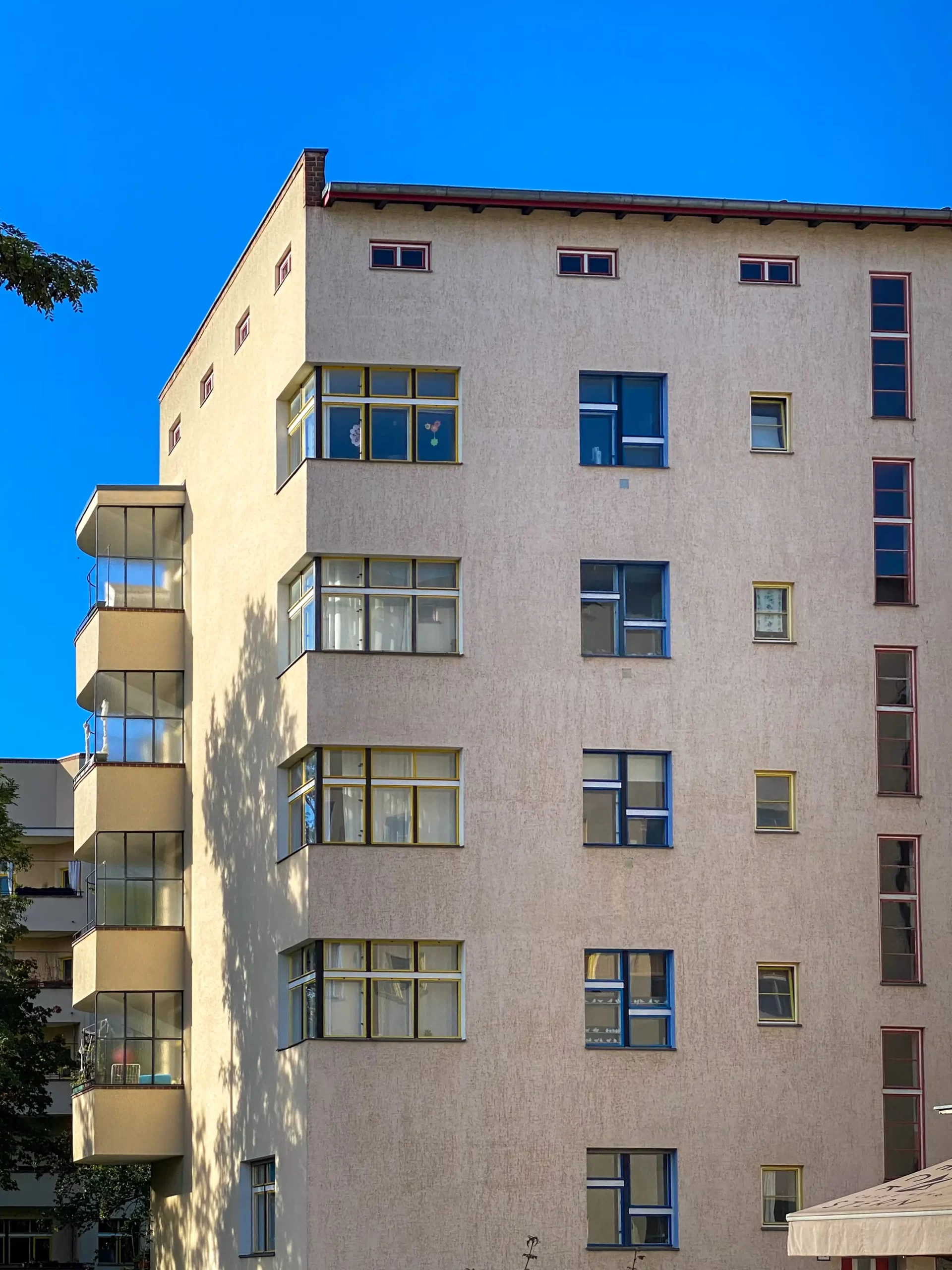
Wohnstadt Carl Legien, 1929-1930. Architects: Bruno Taut, Franz Hillinger. Photo: Daniela Christmann
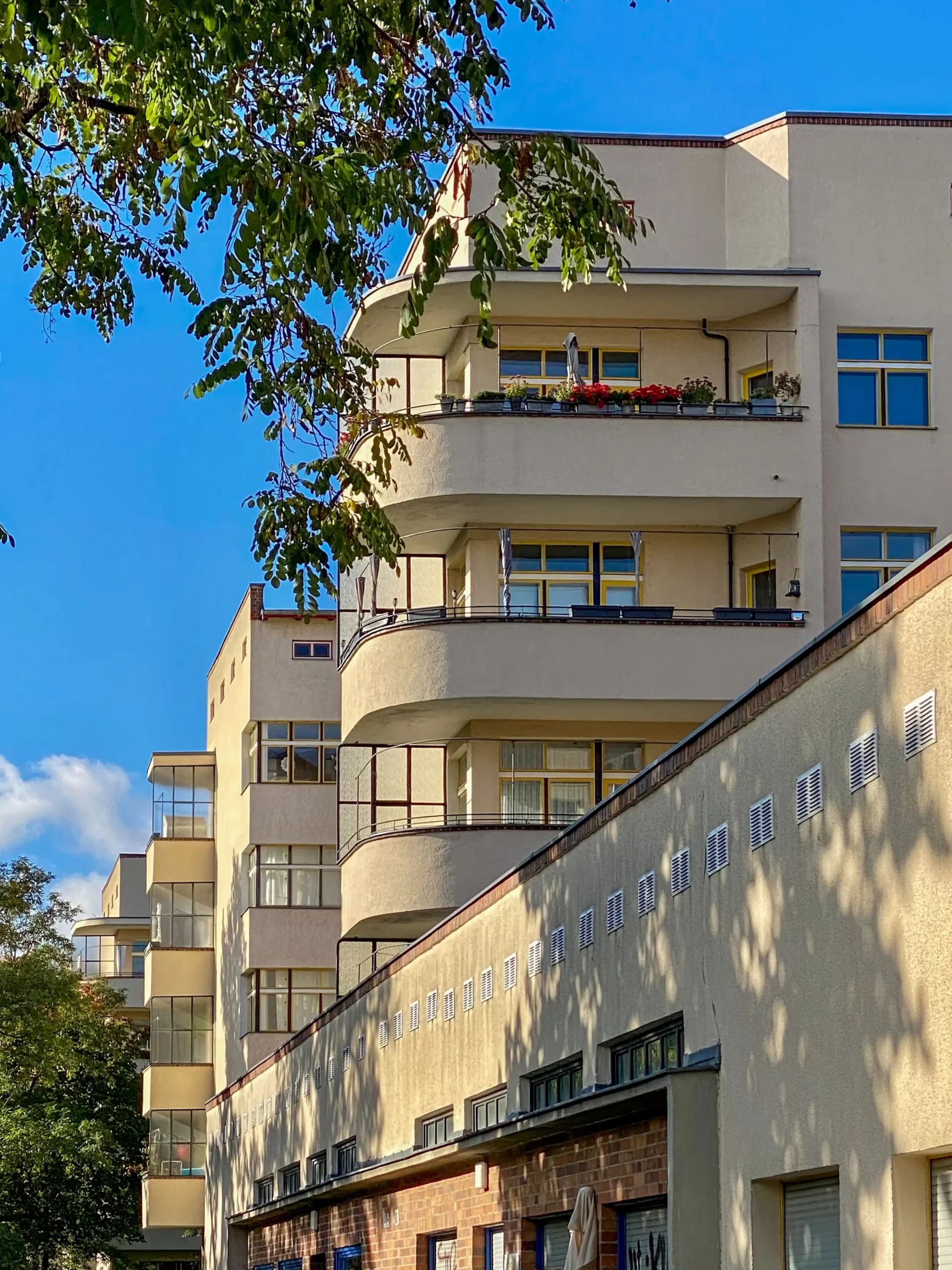
Wohnstadt Carl Legien, 1929-1930. Architects: Bruno Taut, Franz Hillinger. Photo: Daniela Christmann
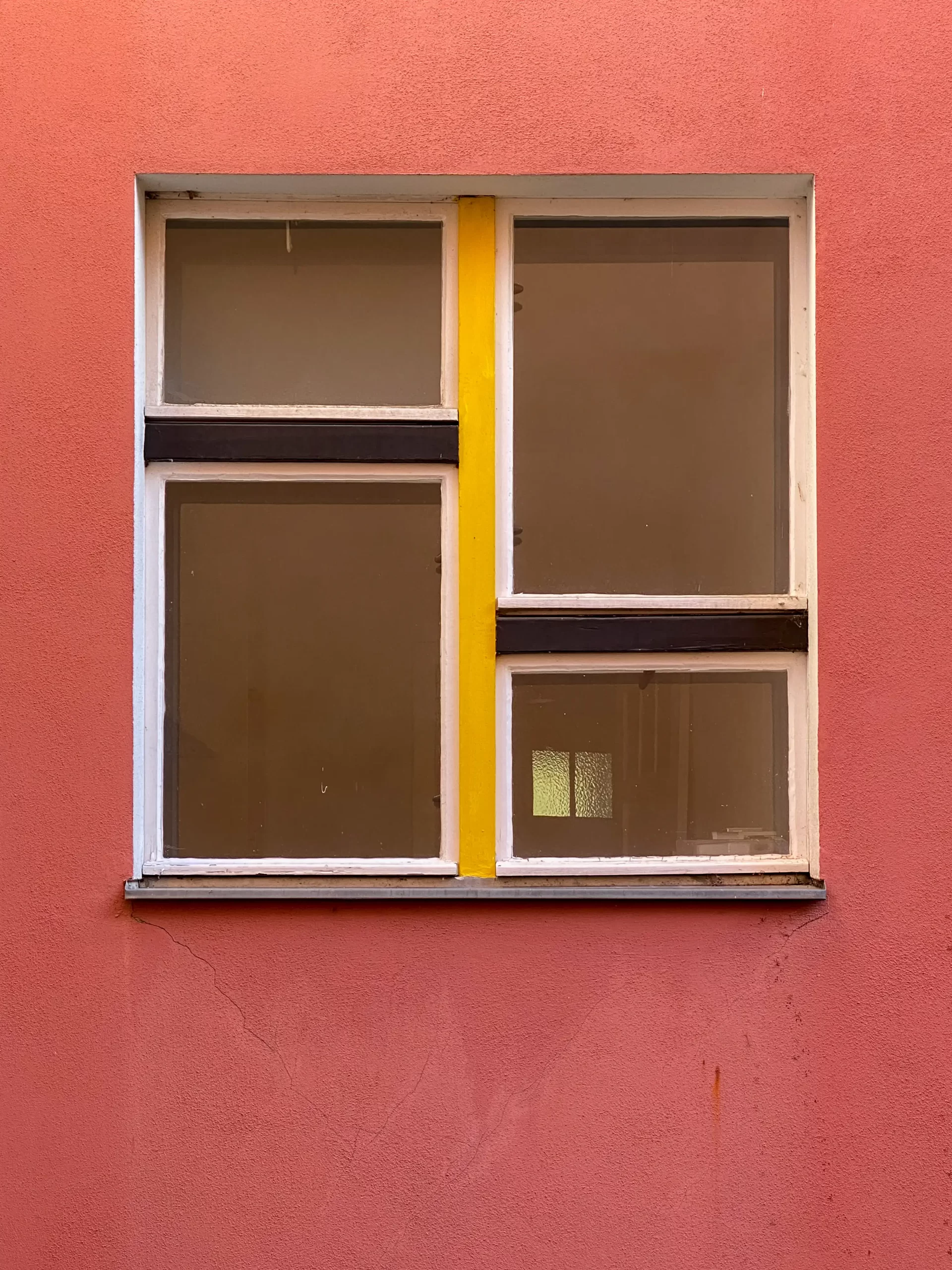
Wohnstadt Carl Legien, 1929-1930. Architects: Bruno Taut, Franz Hillinger. Photo: Daniela Christmann
Furnishings
Taut designed the row, block edge, and garden space into a semi-public spatial structure. The 1 1/2- to 4 1/2-room apartments (80% of which have up to two rooms) are clearly oriented away from the street toward the garden courtyards that cross Erich-Weinert-Straße.
The apartments had fitted kitchens, bathrooms and toilets, and some had central heating.
Since improving hygienic conditions was a central concern of the planners at the time, the two courtyards between Sodtkestraße and Gubitzstraße had their own wash houses with large window fronts for the residents.
The complex also included a kindergarten, a lending library, shops, and a combined heat and power plant.
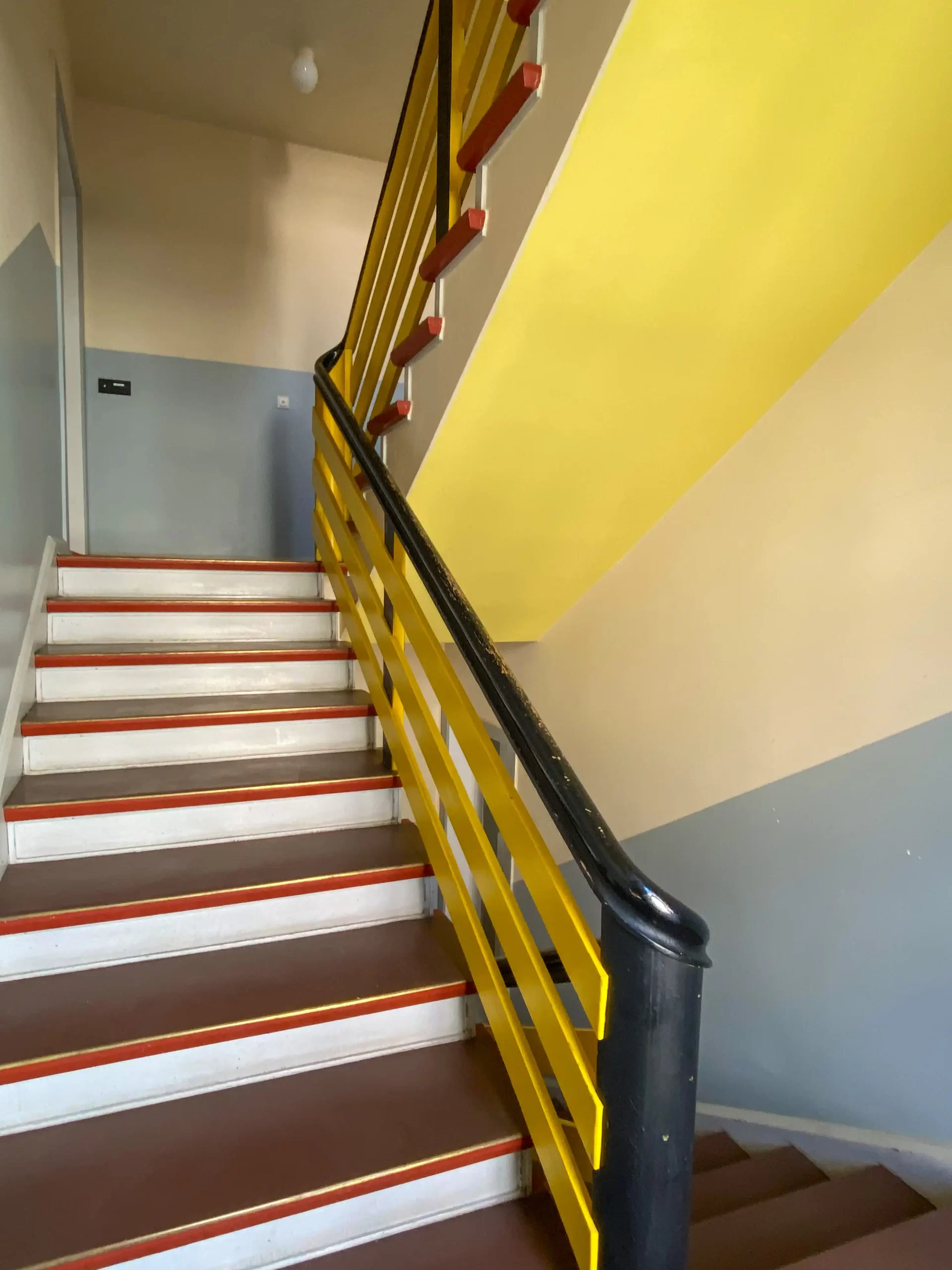
Wohnstadt Carl Legien, 1929-1930. Architects: Bruno Taut, Franz Hillinger. Photo: Daniela Christmann
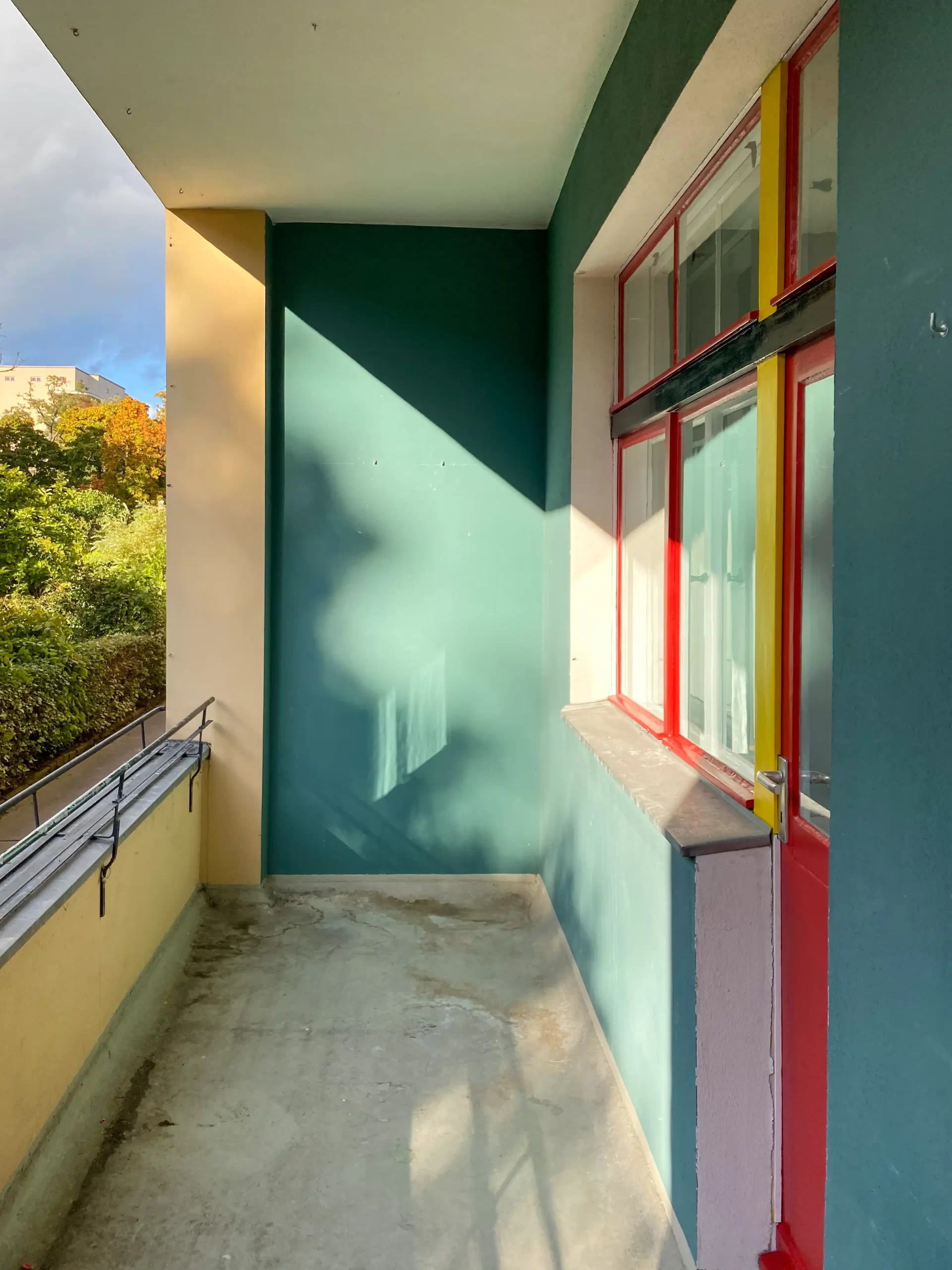
Wohnstadt Carl Legien, 1929-1930. Architects: Bruno Taut, Franz Hillinger. Photo: Daniela Christmann
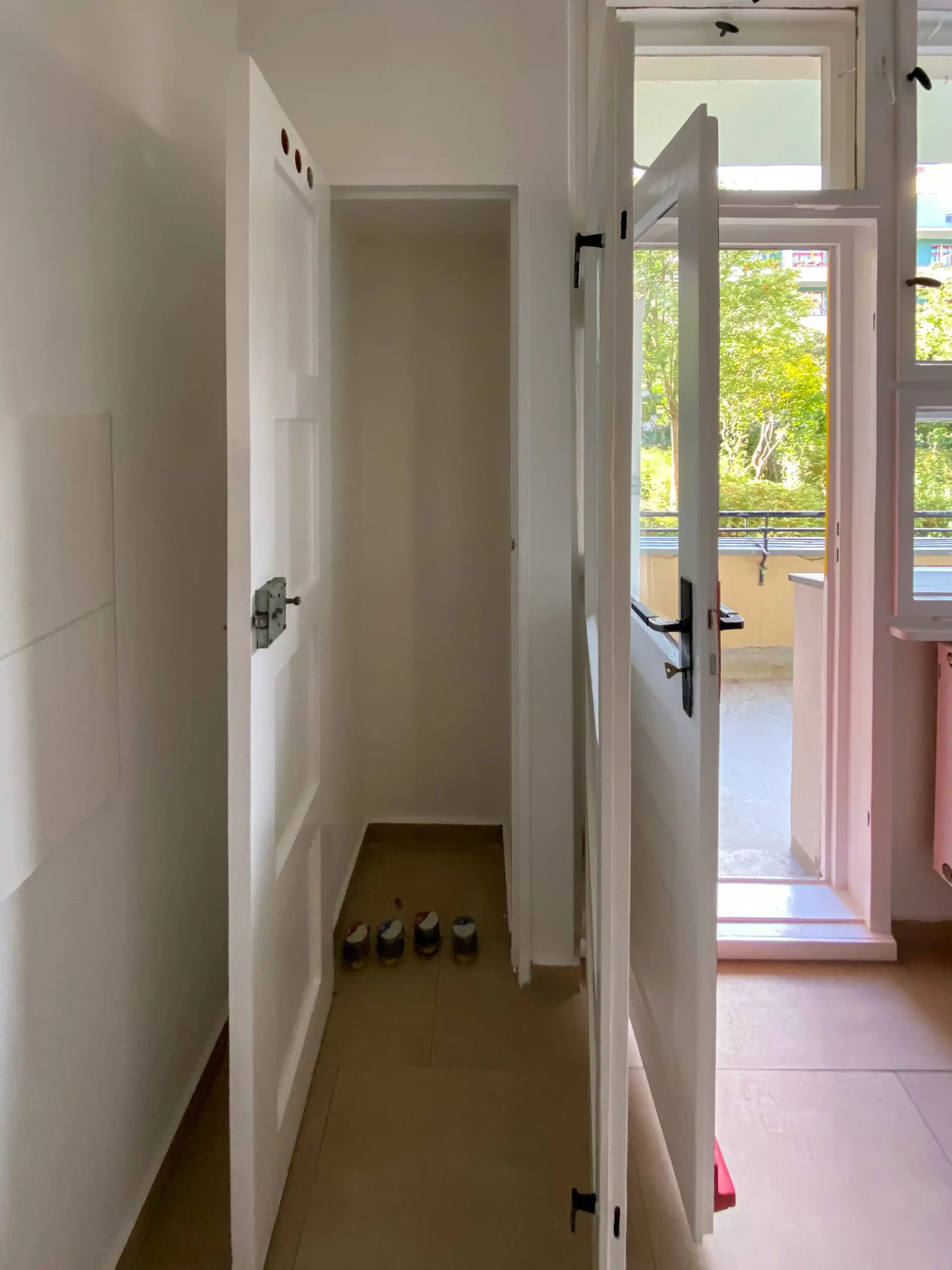
Wohnstadt Carl Legien, 1929-1930. Architects: Bruno Taut, Franz Hillinger. Photo: Daniela Christmann
Color Concept
The color scheme of the development is an essential part of the architecture: the street facades are yellow, visually widening the narrow streets, while the residential courtyards and stairwells create their own color spaces.
Renovation and Modernization
From the mid-1990s until 2004, the estate was continuously renovated and modernized on the basis of conservation studies.
Repairs after 1945 resulted in the loss of much of the original fine plaster and mineral paint. The windows also lost their color and were partially replaced, especially the single windows in the bathrooms. Tenants also converted some of the loggias into conservatories.
With the support of the Deutsche Stiftung Denkmalschutz, GEHAG commissioned the restoration of the facades in the early 1990s and the restoration of their color, which was carried out in 1994-1995 on the basis of preliminary restoration studies.
Most of the windows were preserved, while those that were too damaged were replaced.
The smaller washhouse was rebuilt in the tradition of New Construction in accordance with the preservation order and now serves as an information office for the current owner, Deutsche Wohnen.
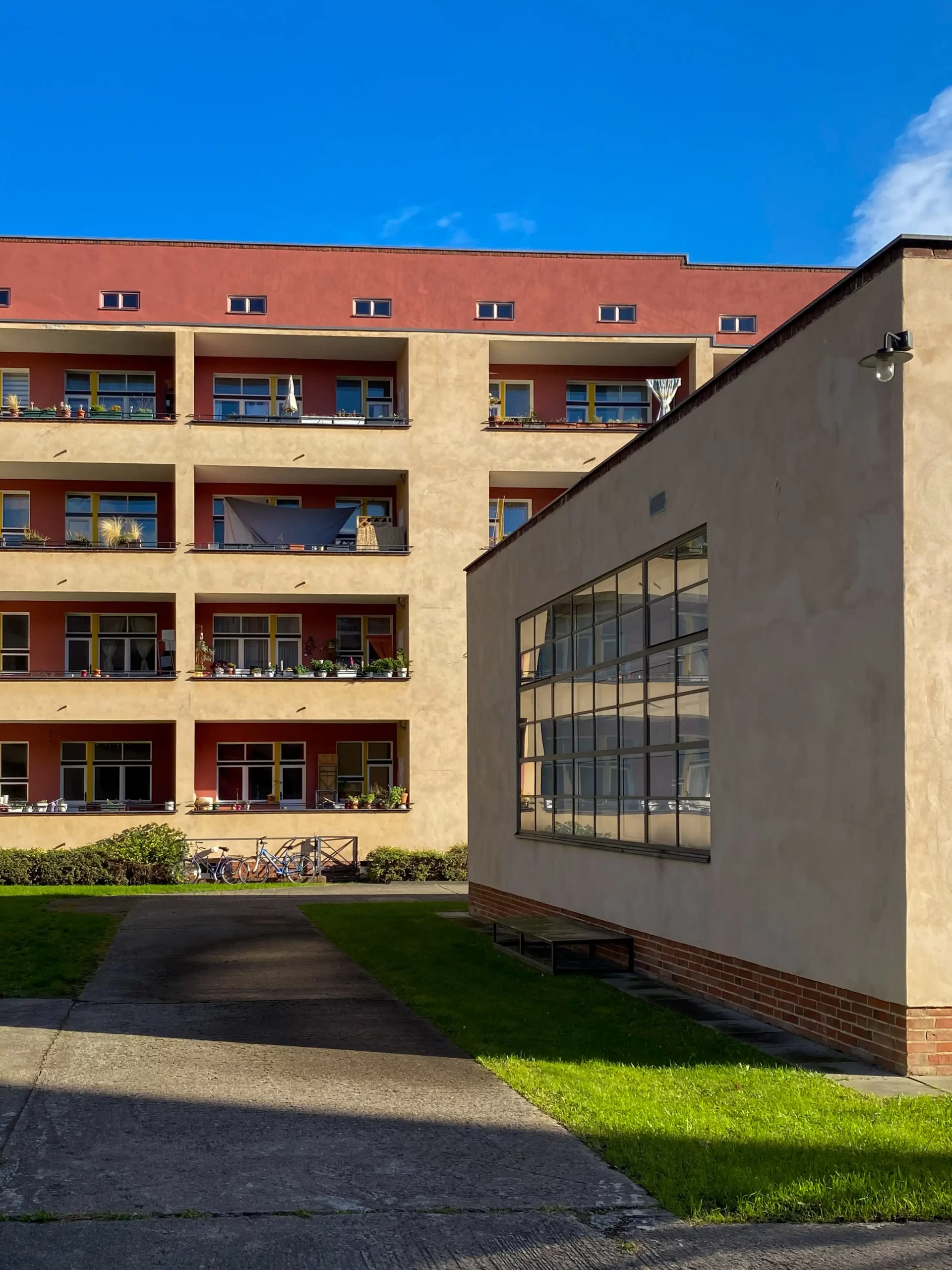
Wohnstadt Carl Legien, 1929-1930. Architects: Bruno Taut, Franz Hillinger. Photo: Daniela Christmann
Lettering
In 2014, the lettering “Wohnstadt Carl Legien – Errichtet von der GEHAG 1929 – 1930” at the corner of Erich-Weinert- and Gubitzstraße, which had been removed by the National Socialists, was reconstructed and reinstalled.
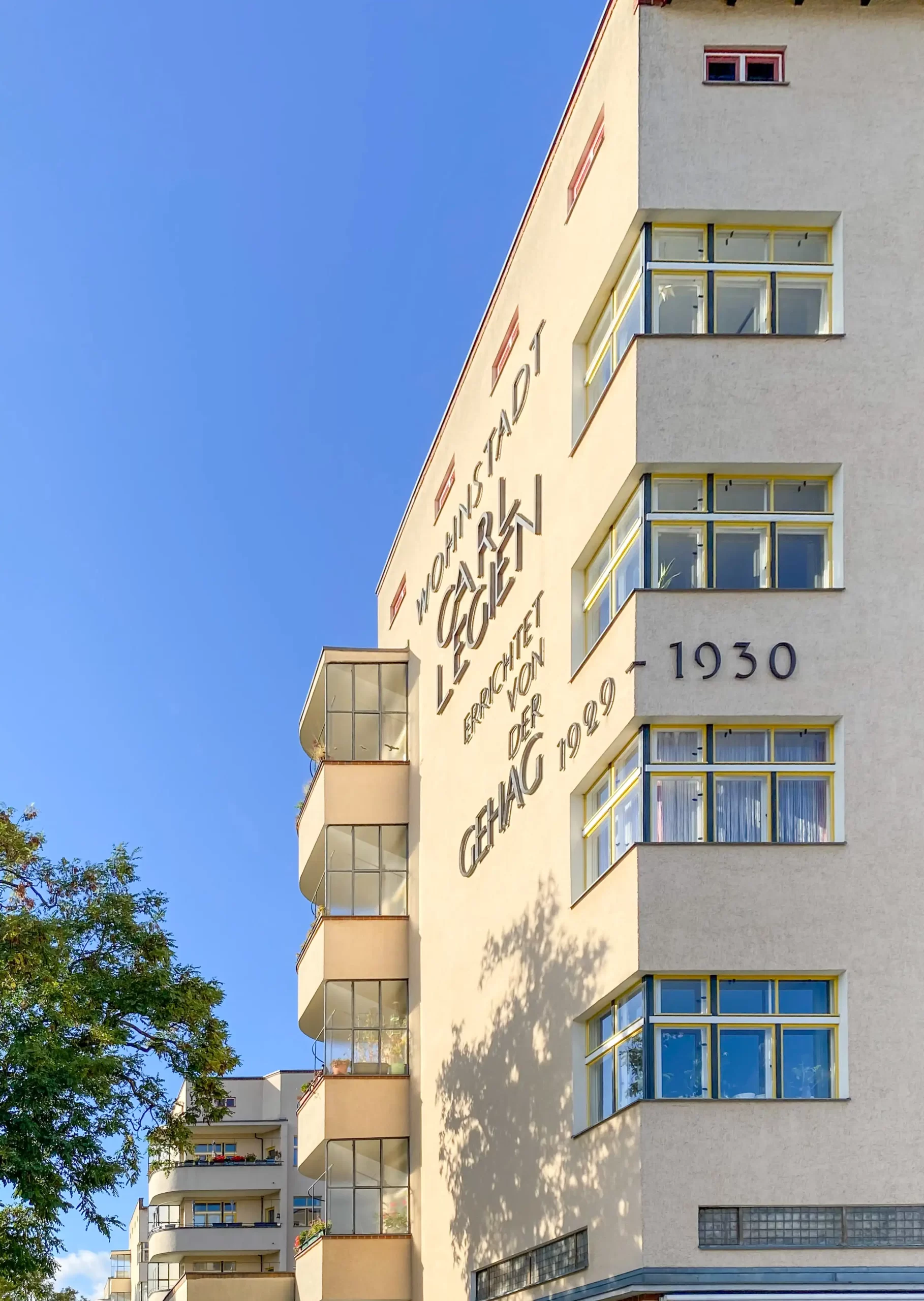
Wohnstadt Carl Legien, 1929-1930. Architects: Bruno Taut, Franz Hillinger. Photo: Daniela Christmann
Monument Protection and World Heritage
The estate has been a listed site since 1977. In 2007 it became the property of Deutsche Wohnen, the successor to GEHAG.
In July 2008, the Carl Legien housing estate was inscribed on the UNESCO World Heritage List as one of six Berlin Modernist housing estates.

